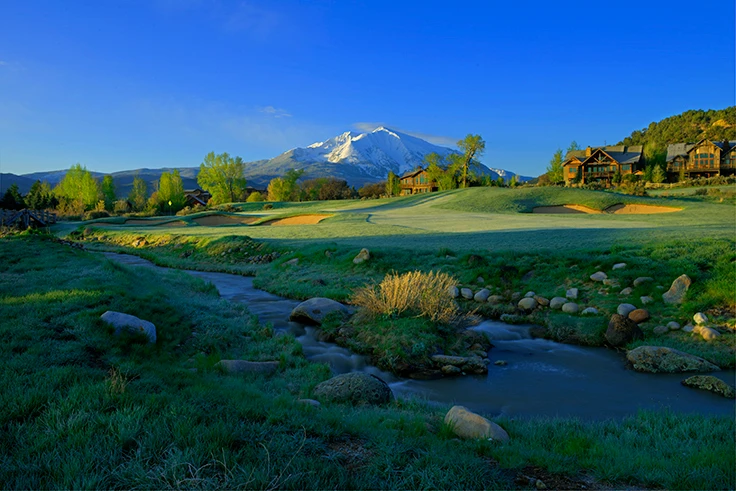
Healthy Turf Tips: Snow Mold – Sponsored by Bayer
Aerify, fertilize, blowout the irrigation system, treat for snow mold.
The five-week sprint to begin fall includes some important steps for superintendent Chad Weaber and his River Valley Ranch Golf Club crew. Weaber, a Pennsylvania native, has lived in Colorado long enough to know it might snow in late October or early November.
River Valley Ranch is an 18-hole, Jay Morrish-designed public golf course 30 miles north of Aspen. In some years, it might snow and snow and snow again, placing unprepared golf courses in perilous positions when ski season ends and the following golf season begins. The climate means preventive snow mold applications are always near the top of Weaber’s crowded to-do lists.
“It’s very important to be thinking about it,” Weaber says. “I’m pretty confident to say that every superintendent has probably gone through that snow mold damage at one point or another, and especially on greens it takes a long time to heal up. I would say it would take a good solid two months until you get the growing temperatures that you need to pull out of snow mold, unless you are sodding it out or plugging it out.
“That goes the same with tees and fairways. It’s a little of a higher growing height and you do get out of it a little faster, but I couldn’t imagine not applying snow mold control and seeing what the golf course looks like following a heavy winter.”
Weaber leaves four weeks between his first and second snow mold applications in the fall. His maintenance budget hovers around $500,000, but he doesn’t skimp on controlling for snow mold on key parts of the course, which include four acres of greens, four acres of tees and 40 acres of fairways. River Valley Ranch’s bentgrass greens will have experienced two snow mold applications by the end of October. Weaber treats fairways, which are a bluegrass-ryegrass mix, on his second snow mold application.
Carbondale receives an average of 50 inches of snow per year, and April 1 is a targeted season opening date, although mid- or late-March openings aren’t anomalies. This year, for example, the course opened March 23. Early spring, like fall, represents a sprint for Weaber and his crew. The sprint becomes easier when the snow melts and the turf appears tidy.
“It’s very satisfying knowing the golf course is going to be in great shape and you don’t have to do that extra sand and seed and whatever you can do to treat the snow mold, whether you are going to sod it or plug it,” Weaber says. “It’s just a lot of extra work to do everything else you have to do to open up the golf course. It’s very satisfying when you do the right things. It’s just less stress.”
Guy Cipriano is GCI's assistant editor.
Get curated news on YOUR industry.
Enter your email to receive our newsletters.Latest from Golf Course Industry
- GCSAA’s Health in Action 5K/2K reaches fundraising goal
- Landscapes Golf Management to participate in data analyzation initiative
- Reel Turf Techs: Carl Michael
- Atlanta Athletic Club approves funding for master plan
- Maximizing Cultural Practices and Agronomic Benefits with Minimal Surface Disruption
- Real Answers about Spray Nozzle Choices
- From the Course to the Factory: How Customer Insights Drive Innovation
- New & Proven Enzyme Strategies for Sprayable Thatch Management





